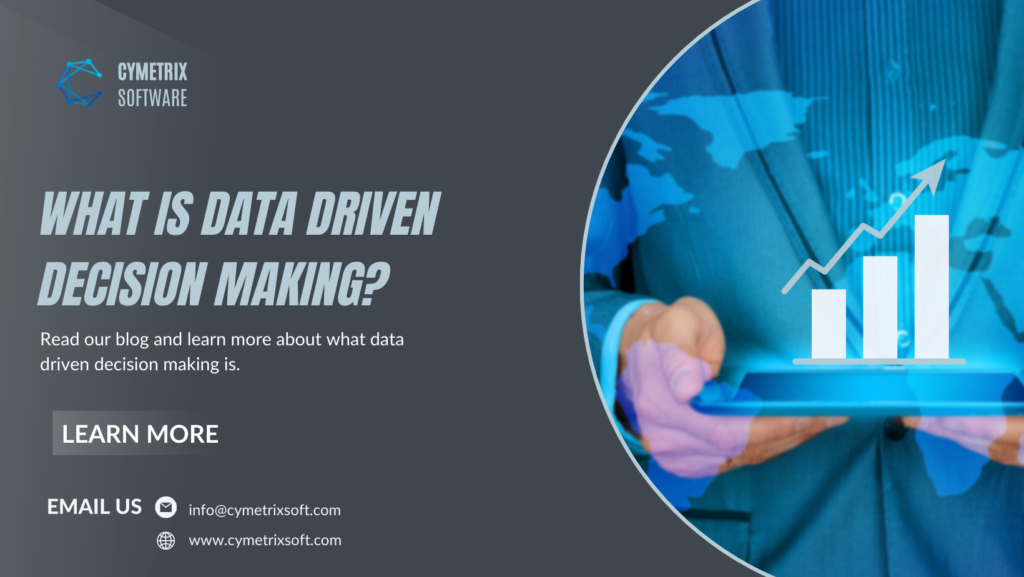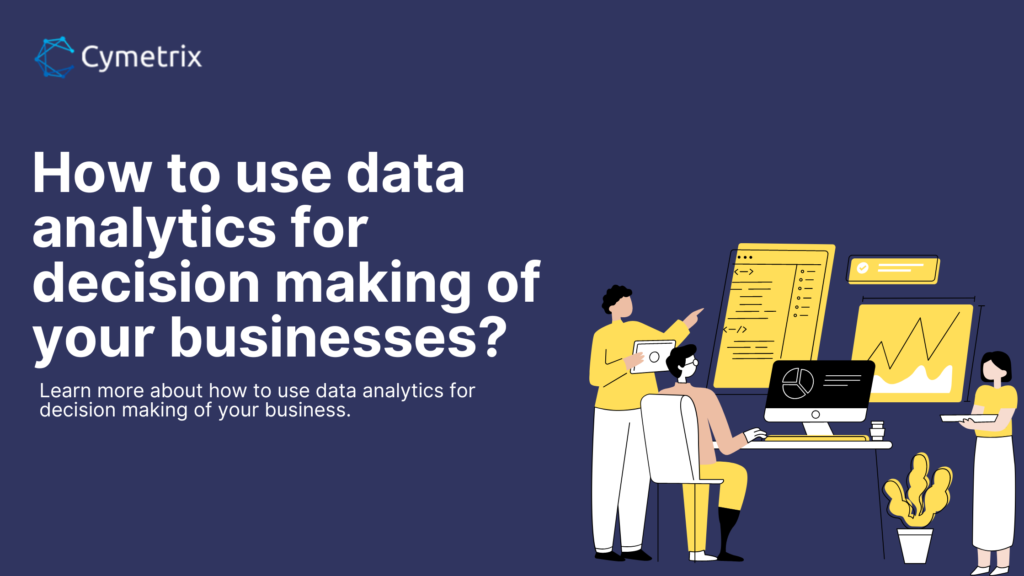
In today’s world, data is ubiquitous, and its potential for improving decision-making is immense. However, not all decision-making processes are based on data and organizations that do not embrace data driven decision making risk being left behind.
According to a recent study by Forrester Research, 74% of companies say they want to be data-driven, but only 29% say they are good at connecting analytics to action. This discrepancy highlights the need for organizations to adopt data-driven decision-making to stay competitive.
In this blog, we will explore what data-driven decision-making is, its benefits, and how it is applied in various industries. We will also discuss the challenges and limitations of data-driven decision-making, best practices, and the call to action for organizations to embrace data-driven decision-making.
Data-driven decision making: Overview
Data-driven decision making is a process of making informed and objective decisions based on data and analysis, rather than relying on intuition or personal experience. It involves collecting, analyzing, and interpreting relevant data to identify patterns, trends. Along with insights that can be used to inform business decisions.
To make data-driven decisions, organizations must have access to accurate and timely data and the ability to analyze and interpret that data effectively. That requires using specialized tools and technologies and skilled professionals who can make sense of the data and communicate the findings to decision-makers.
Data-driven decision making has several benefits for organizations, including:
- Improved accuracy: Data-driven decision making reduces the risk of making decisions based on incomplete or inaccurate information.
- Increased efficiency: By using data to inform decisions, organizations can streamline processes and make more effective use of resources.
- Competitive advantage: Organizations may make quicker, more informed decisions thanks to data-driven decision making, providing them a competitive advantage over rivals.
- Better customer experience: Data-driven decision making can help organizations understand customer needs and preferences, allowing them to tailor their products and services to meet those needs.
Data-driven decision making is not limited to the business world. Moreover, other fields, including healthcare and education, use it to enhance decision-making processes and outcomes. In the healthcare industry, professionals use data to enhance patient outcomes and decrease healthcare costs. In education, educators use data analytics to identify areas where students are struggling and develop targeted interventions to help them succeed.
Therefore, data-driven decision making is a powerful tool that can help organizations make better, more informed decisions. By collecting and analyzing relevant data, organizations can gain insights into their operations, customers, and competitors. So, it allows them to stay competitive and adapt to changing market conditions.

How to use data analytics for decision making of your businesses?
Data-driven decision-making is transforming the way businesses operate, and its application spans a wide range of industries. Here are some examples of how you can use data-driven decision making:
- Customer segmentation: By analyzing customer data, businesses can segment their customers into different groups based on their needs and preferences. That allows them to tailor their products and services to meet the specific needs of each group, improving customer satisfaction and loyalty.
- Supply chain optimization: Businesses can use data to optimize their supply chain processes, from forecasting demand to managing inventory levels. It helps them reduce costs and improve efficiency.
- Marketing and advertising: Data-driven decision-making is crucial in marketing and advertising. Moreover, by analyzing customer data and behavior, businesses can develop targeted marketing campaigns and improve their return on investment.
- Performance management: It can help businesses monitor and evaluate the performance of their employees and teams. By tracking key performance indicators (KPIs), you can identify areas for improvement and develop targeted training programs to enhance performance.
- Risk management: This practice can help businesses identify potential risks and develop strategies to mitigate them. By analyzing historical data and market trends, businesses can identify potential threats and develop contingency plans to minimize their impact.
To apply data-driven decision-making effectively, businesses need to have access to accurate and timely data, and the ability to analyze and interpret that data effectively. That requires the use of specialized tools and technologies and skilled professionals who can make sense of the data and communicate the findings to decision-makers.
If you’ve found this blog to be useful, you should also read our blog on salesforce data migration. This blog will help you understand everything you need to know about this topic.
Data-driven decision making in other fields
Data-driven decision making is not limited to the business world. It is increasingly being used in other fields, such as healthcare, education, and government. According to a report by McKinsey & Company, data-driven decision-making could generate up to $100 billion in value annually in the US healthcare system alone.
Here are some examples of how data analytics is being applied in other fields:
- Healthcare: Healthcare providers are using this approach to enhance patient outcomes and lower healthcare costs.. By analyzing patient data, healthcare providers can identify high-risk patients and develop targeted interventions to improve their health. Data-driven decision-making can help improve the efficiency of healthcare systems, from optimizing hospital operations to reducing readmission rates.
- Education: Educators are utilizing it to enhance student outcomes and improve the effectiveness of teachers. By analyzing student data, educators can identify areas where students are struggling and develop targeted interventions to help them succeed. In addition, educators are utilizing data to assess the performance of teachers and enhance the efficacy of educational programs.
- Government: Governments can use it to enhance policy-making and improve the delivery of services. By analyzing data on citizen needs and preferences, governments can develop targeted policies and programs that meet the needs of their citizens. Furthermore, governments are utilizing data to enhance the effectiveness of their operations. Whether it is optimizing resource allocation or reducing bureaucratic red tape.
In conclusion, data-driven decision making is a powerful tool that is transforming the way organizations operate, from businesses to healthcare providers to government agencies. By using data to inform decision-making processes, organizations can gain insights into their operations, customers, and stakeholders. So, it allows them to make informed decisions that drive success and improve outcomes.
Best practices for data analytics
Data analytics can provide organizations with valuable insights that can drive business growth and success. However, to get the most out of your data, it’s important to follow some best practices. Here are some tips for effective data-driven decision making:
- Define your objectives: Before you start analyzing data, it’s essential to define your objectives. What do you want to achieve? What questions do you want to answer? By identifying your objectives, you can focus your analysis on the data that is most relevant to your goals.
- Collect relevant data: It’s important to collect relevant data that can help you answer your questions and achieve your objectives. That might include customer data, sales data, website analytics, or other types of data that are relevant to your business.
- Use reliable data sources: It’s crucial to use a reliable data source that provides accurate and up-to-date information. That might include internal data sources, such as your CRM system, and external data sources, such as market research reports.
- Analyze your data: Once you have collected your data, it’s necessary to analyze it effectively. That might involve using data visualization tools to identify trends and patterns. Along with using a statistical analysis technique to identify correlations and relationships between data points.
- Make data-driven decisions: Finally, it’s necessary to use your data to make informed decisions. That might involve developing a strategy based on your analysis, or making changes to your operations based on the insights you have gained.
By following these best practices, you can ensure that your data is effective and delivers relevant results for your business. Additionally, it’s essential to continuously evaluate and adjust your approach as needed to ensure that you are getting the most out of your data.
Conclusion
In conclusion, data analytics has become an essential practice for businesses looking to drive growth and success in today’s data-driven world. By harnessing the power of data, you can gain valuable insights into their operations, customers, and stakeholders. As a result, it allows them to make informed decisions that can drive business success.
At Cymetrix, we understand the importance of data-driven decision making for businesses of all sizes. That’s why we offer a range of data analytics solutions designed to help you make sense of their data and use it to drive better decision-making. Whether you need help with data collection, analysis, or visualization, our team of experts can help you develop a data-driven strategy that delivers relevant results.
So, if you’re interested in learning more about how data-driven decision-making can benefit your business, we encourage you to get in touch with us today. Our team is always here to answer your questions and help you leverage the power of data analytics solutions that meets your needs. Don’t wait – start harnessing the power of data today with Cymetrix!
